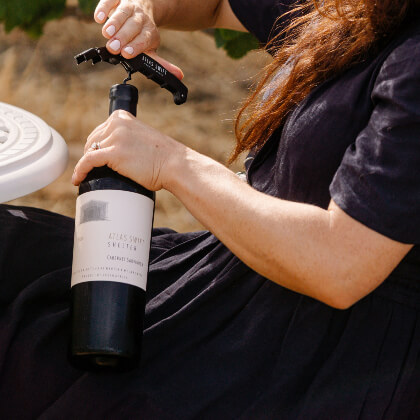
Cabernet Sauvignon is known for its bold aromas, firm tannins, and dark fruit flavors. Many wine enthusiasts find themselves wondering if this robust red should be chilled or simply poured from the bottle at room temperature.
In this article, we’ll look at what really makes this beloved varietal shine. You’ll discover why temperature matters for flavor, mouthfeel, and overall enjoyment, helping you decide how best to serve your next bottle.
Exploring Cabernet’s Characteristics
One of the pillars behind a great Cabernet is its structure. Comprising significant tannins and deep fruit undertones, this red typically boasts notes of blackcurrant, plum, and even hints of cedar. All those layers come from the grapes’ thick skins, which bring forth a fuller body and a longer aging potential. Because of these features, many fans are curious about whether a slight chill might enhance those flavors, or if the wine’s complexity is best showcased at warmer temperatures. The key lies in understanding what these natural elements require in terms of service conditions.
Cabernet Sauvignon vineyards thrive in regions that offer plenty of sun, which helps develop those signature fruit-forward traits. Over time, winemaking methods like oak barrel aging can add spicy or vanilla-tinged nuances. These developments contribute to the intricacy that makes people ask, “Should a bold red wine like Cabernet be cooled to enhance its flavors?” While there isn’t a single, rigid answer to that question, being informed about the wine’s intrinsic qualities can guide you toward a more optimal approach.
Before focusing on temperature, remember that proper decanting or letting the wine breathe can also make a huge difference in releasing its aromatic layers. This practice allows oxygen to soften the tannins, creating a more rounded sip. By combining the right aeration techniques with mindful temperature management, you can elevate each glass even further, ensuring every velvety note is highlighted in the best possible way.
Temperature’s Influence on Flavor
Serving temperature can drastically alter how a Cabernet Sauvignon presents itself in the glass. When served too warm, alcohol aromas may dominate, overshadowing the fruit and oak nuances you’re aiming to taste. Conversely, if it’s too cold, the wine’s aromas and flavors become muted, making it harder to detect those intricate layers. This balance is why many aficionados say a moderate, slightly cool environment is often ideal. So, is it ever beneficial to introduce a light chill to a Cabernet Sauvignon for maximum enjoyment? The answer depends on personal preference and the wine’s individual personality.
Most experts recommend a serving range between 15°C and 18°C (59°F to 64°F). This allows the wine to retain its aromatic intensity without turning overly tannic or losing its depth. You might briefly place the bottle in a refrigerator or wine cooler—particularly if your room temperature is pushing close to 25°C (77°F). Is chilling this complex red beneficial or should it remain at typical indoor temperatures? A brief cool-down can serve to balance out any high-alcohol edge, but long-term storage in a frigid environment might dull its boldness.
A wine’s acidity and tannin structure thrive within a specific temperature window. Chilling a Cabernet slightly for 20 to 30 minutes can bring a refreshing edge, especially in warmer climates or during summer months. However, leaving it in the fridge for hours on end might strip away some textural charm. Ultimately, experimentation is encouraged: if you find a cooler sip more pleasant on a hot day, try it. Setting aside strict rules and focusing on personal liking often leads to a more fulfilling glass of wine.
Practical Serving Tips
For the best experience, store your Cabernet Sauvignon in a cool, dark place—preferably a dedicated wine fridge or cellar—at around 12°C (54°F) if possible. This maintains stability during the aging process. When you’re ready to serve, remove the bottle and let it sit at room temperature for about 15 to 30 minutes. That slight temperature lift will help it hit the sweet spot. If you don’t have a wine fridge, a standard refrigerator can do the trick for a short period: just keep an eye on time to avoid over-chilling.
Decanting is another strategy for maximizing flavor. Pouring this red into a decanter and letting it sit exposes it to oxygen, which helps mellow harsh tannins and reveals subtler fruit and oak nuances. While some find that allowing the wine to open at room temperature is sufficient, others choose to briefly place their decanted wine in a cooler environment. In the end, the question “Is it best to serve a Cabernet with a bit of coolness or at room temperature?” hinges on individual taste preferences and situational factors like ambient heat or humidity.
If you’re new to exploring the ideal serving temperature for a bold red wine like Cabernet, try tasting it at different points in the chilling process. Sample it directly from the fridge, then again ten minutes later. Notice how the aromas evolve and whether the fruit notes or tannic backbone stand out. This hands-on approach helps you discern the sweet spot that showcases a Cabernet’s hallmark characteristics. Over time, you’ll discover the precise balance that suits your palate best.
In Conclusion
Cabernet Sauvignon can certainly benefit from a gentle chill under the right circumstances, particularly when room temperatures climb. A balanced approach of slight cooling and proper aeration often reveals the wine’s complexity and maintains the smooth mouthfeel most enthusiasts love.
We welcome you to explore our online store or visit our location for a memorable wine tasting experience. Experiment with different serving methods, and when you’re ready for an exceptional bottle, trust our range to deliver an unforgettable pour every time. Cheers!
